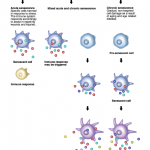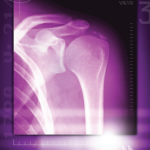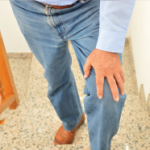The FDA is investigating serious and potentially fatal side effects associated with Limbrel, which is designed to manage metabolic processes in patients with osteoarthritis…


The FDA is investigating serious and potentially fatal side effects associated with Limbrel, which is designed to manage metabolic processes in patients with osteoarthritis…

Elizabeth Hofheinz, MPH, MEd |
You may say the 30 million Americans with osteoarthritis (OA) are walking around with a Band-aid—or so it seems.1 That’s because there’s no actual cure for this disabling condition. However, an international group of scientists is making headway on a method of eliminating aging—senescent—cells as a way to prevent or even reverse OA. Cartilage Disappears,…

Mast cells may become a therapeutic target for low back pain, according to new research. Researchers found mast cells can infiltrate intervertebral disc cells and play a role in their degeneration. Specifically, mast cells and the cytokine, IL-6, were both more likely to be found in painful intervertebral discs surgically removed from patients than in control discs…

MADRID—Calcification in osteoarthritis (OA) involves a series of pathways and interactions that feed off each other in a process that bears some resemblance to the transformation of cartilage to bone that takes place in the embryonic stage of human development, a researcher said here at the 2017 Annual European Congress on Rheumatology (EULAR). “My hypothesis…

Research has shed light on the genetic mutations that link GDF5 with arthritis and height. An ancient regulatory variant in GROW1 has been repeatedly selected in humans in northern environments, explaining the high frequency of a GDF5 haplotype that increases arthritis susceptibility…

An international task force convened by the European Society for Clinical and Economic Aspects of Osteoporosis and Osteoarthritis (ESCEO) recommends systematic repeated intra-articular hyaluronic acid (HA) injections as second-line treatment for patients with knee osteoarthritis (OA). This is the first time a group of experts has made this recommendation, which is directed toward treatment of…
Madeline Kennedy |
(Reuters Health)—A new study finds that as many as four in 10 people may develop hand osteoarthritis. Among women, researchers found the lifetime risk was 47% while for men it was about 25%. Obese people also had 11% higher lifetime risk than those who were not obese. Hand osteoarthritis can cause disability and problems with…

As clinicians, we are familiar with pain, stiffness and soreness—subjective nouns that define our métier. These helpful words serve as signposts that direct us along the path to the proper diagnosis. Consider the young man with a stiff, sore back (a case of ankylosing spondylitis?) or the postpartum woman experiencing newly painful, stiff and sore…

Kelly April Tyrrell |
Guselkumab Improves Active Psoriatic Arthritis New research has revealed that patients with active psoriatic arthritis (PsA) and ≥3% body area of plaque psoriasis benefit from treatment with a human monoclonal antibody known as guselkumab (GUS). GUS is specific for the p19 subunit of interleukin 23 (IL-23). Patients in the Phase 2 clinical trial experienced significant…

WASHINGTON, D.C.—What do treating hand osteoarthritis (OA) in the primary care setting, high financial strain and risk of depression in patients with lupus, prolonged sitting and cardiovascular disease, and sex-specific treatment after total hip arthroplasty have in common? They were all topics presented during a session titled ARHP I: Exemplary Abstracts at the 2016 ACR/ARHP…